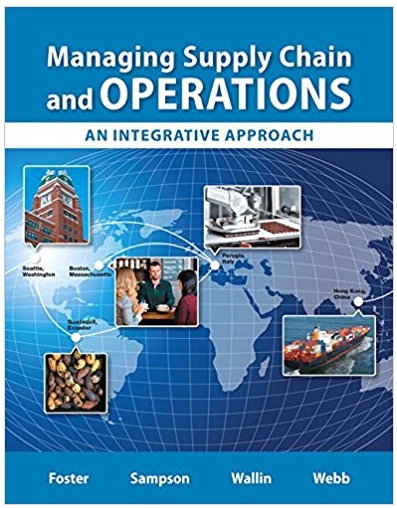Question
1.Which of the following is not one of the benefits of current-year and cumulative expenditures for camera/drone product R&D? Increasing the productivity of PATs in
1.Which of the following is not one of the benefits of current-year and cumulative expenditures for camera/drone product R&D?
Increasing the productivity of PATs in assembling camera/drone models (because of easier to assemble product designs)productivity gains occur as soon as current and cumulative R&D spending reach levels sufficient to identify and develop easier to assemble product designs
Boosting a company's P/Q ratings (the size of this benefit varies with the current and cumulative amounts spent and shows up in the P/Q ratings at the beginning of the following year) Lowering the costs of components, accessories, and enhancement features used in assembling cameras/drones
Reducing the need to spend money either on search engine advertising for drones or on having sales promotions for action cameras.
Reducing warranty claims and warranty costs (these two benefits show up at the beginning of the following year)
2.Unit sales of wearable, miniature action-capture cameras are reliably projected to grow
6%-8% annually in Latin America during Years 6-10, slowing to 4%-6% during Years 11-15.
faster in Europe-Africa than in both the Asia-Pacific and Latin America during the Year 11-15 period.
faster in the Asia-Pacific region than in North America throughout the Year 6-15 period.
faster in North America than in Europe-Africa during Years 6-10 but faster in the Europe-Africa region than in North America during Years 11-15.
faster in the Asia-Pacific region than in the Latin America region during Years 11-15.
3.The productivity of camera/drone PATs is affected by a variety of factors that include
the percentage increases in annual base wages, the size of the fringe benefits package, the amount the company spends annually per camera/drone PAT on training and productivity-enhancing assembly methods, and changes in the number of models being assembled.
how the total compensation packages (not including vacation days) of camera/drone PAT members compare to the all-company average compensation levels, warranty claims, and expenditures per camera/drone PAT on product enhancements.
the years of assembly experience of newly-hired PAT members, the prior-year percentage of PAT members leaving the company for jobs elsewhere, base wage percentage increases, the size of annual expenditures to reduce warranty claim rates, the percentage of the assembly process that is performed by robots, and the size of weekly bonuses paid to PAT members for beating their weekly assembly quota.
the percentage use of overtime, the size of the weekly bonuses paid to camera/drone PATs for exceeding the weekly quota for assembling cameras/drones, the percentage of the assembly process that is performed by robots, and the number of camera/drones components that have to assembled
perfect attendance bonuses, the percentage use of overtime, cumulative spending on product R&D for cameras/drones, and how frequently camera/drone workstations are modernized.
4.Which of the following is not accurate as concerns the online retailers of unmanned aerial view drones and/or the buyers of unmanned aerial view drones?
The vast majority of drone shoppers consider the widely-available and much-publicized annual P/Q ratings compiled by the Global Alliance for Safe and Responsible Use of Commercial Drones to be a trusted measure of the performance and quality of competing brands of drones.
Market research confirms that the prior-year overall images/brand reputations of rival drone-makers have a moderately strong influence on the brand choices of drone buyers in the upcoming twelve months.
Because your company sells its UAV drone models at the company's own website in direct competition with other online retailers of UAV drones, these online retailers are inclined to stock and display your company's brand of drones only if they can purchase your drone models at an attractive percentage discount to the price being charged on your website.
When two brands of drones have slightly different prices and P/Q ratings (and all other buyer considerations are, on balance, an even tradeoff between the two brands), then a bigger percentage of buyers in North America and Europe-Africa (as compared to the Asis-Pacific and Latin America regions) will disregard which brand has the higher P/Q rating and purchase the lower-priced brand.
A big majority of the individuals and enterprises interested in purchasing a UAV drone for commercial use do extensive Internet research to educate themselves about the features, performance, and prices of different brands and models of UAV drones.
Step by Step Solution
There are 3 Steps involved in it
Step: 1

Get Instant Access to Expert-Tailored Solutions
See step-by-step solutions with expert insights and AI powered tools for academic success
Step: 2

Step: 3

Ace Your Homework with AI
Get the answers you need in no time with our AI-driven, step-by-step assistance
Get Started


